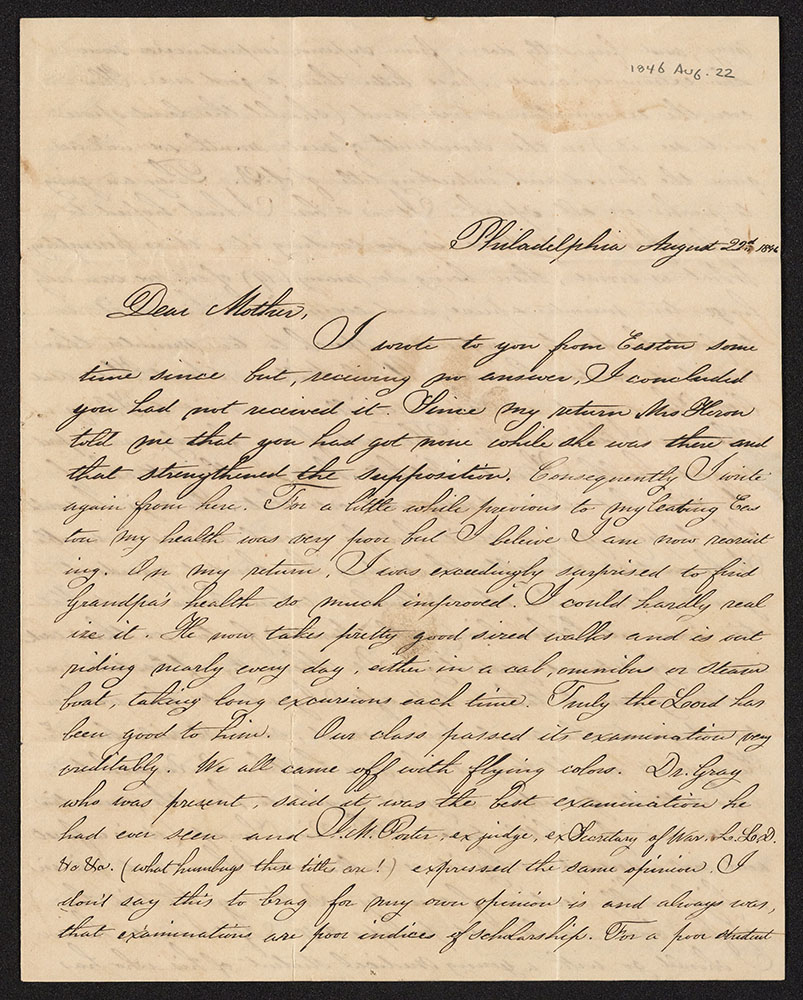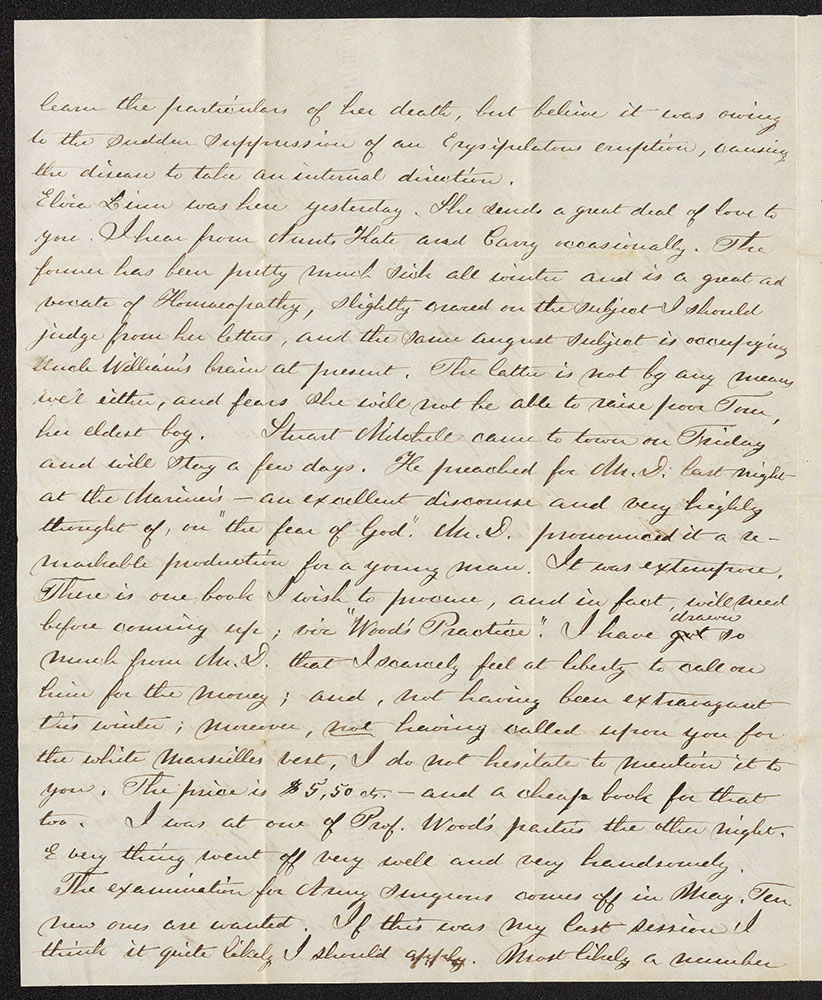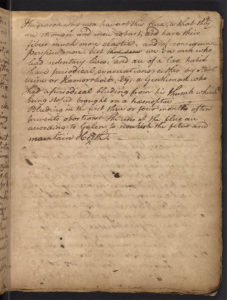~This post courtesy Chrissie Perella and Beth Lander.
We are pleased to announce that over 20,000 pages of lecture notes and related material has been digitized to date as part of “For the Health of the New Nation” grant. “For the Health of the New Nation: Philadelphia as the Center of American Medical Education, 1746-1868” is a two-year project funded by CLIR and organized by the Philadelphia Area Consortium for Special Collections Libraries (PACSCL). The initiative will digitize, describe, and provide access to 140,000 pages of lecture tickets, course schedules, theses, dissertations, student notes, faculty lectures notes, commencement addresses, opening addresses, and matriculation records, sharing not only the voices of the medical greats, but also the often unheard voices of students.
Some of the highlights included in our first batch of uploads to the Internet Archive include the Samuel Knox notes on lectures from the University of Pennsylvania (1783-1785), a two-volume set of notes on topics such as midwifery, symptoms of pregnancy and labor, typical and atypical births, and postnatal care. These notes are one of the earliest sets of student lecture notes in the Library’s collection. The contain Samuel Knox’s 1783 abstract of Colin McKenzie’s lectures on midwifery in 1773 at the University of Pennsylvania as well as Knox’s notes on Adam Kuhn’s materia medica lectures and Benjamin Rush’s chemistry lectures at the University of Pennsylvania, 1784-1785. Although we may not have many (if any) patient records from 18th-century Philadelphia, these lecture notes can tell us a lot about preventive care and treatments for illnesses in contemporary times. For example, Knox notes that “Bleeding [bloodletting] in the first three or four months prevents abortion.” Bloodletting was not uncommon in late 18th century and early 19th century obstetrics.
Other materials digitized as part of “For the Health of the New Nation” give us insight into the lives of medical students. The Forster family papers (1819-1880) include letters from James H. Stuart to his mother and brother, Benjamin, which concern his training and experiences as a medical student in Philadelphia at the University of Pennsylvania. James earned his M.D. from the University of Pennsylvania in 1850. He opened a medical practice in Erie, and later became an Assistant Surgeon in the U.S. Navy. He was a member of Commodore Matthew Perry’s expedition to Japan in the 1850s, and was lost at sea off the Chinese coast in September 1854.
On 22 August 1846, James wrote his mother to say that his class had passed their examinations with “flying colors” and that Dr. Gray had “said it was the best examination he had ever seen.”



In a later letter, dated 12 March 1849, James asks his mother to send money for a book entitled “Wood’s Practice,” which he says at $5.50 is a cheap book. We have two copies of this book, as well as several archival collections created by or relating to George B. Wood (1797-1879).



What else can we learn from student lecture notes and correspondence? Check out these and other items digitized as part of the grant here: http://bit.ly/cpp_fhnn, and start exploring what medical students learned and how they lived in the early days of Philadelphia. Keep an eye our Twitter account @CPPHistMedLib for updates!






